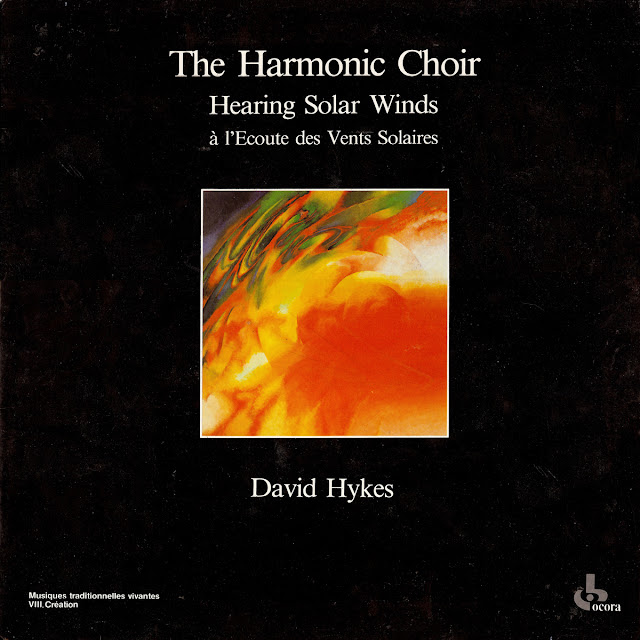
“This recording was made in L’Abbaye du Thoronet, a 12th-century Cisterian monastery in Provence, where I had previously brought the choir in 1978. The simple harmonic geometry of the abbey seemed perfectly proportioned to magnify the choir’s music and let it resonate within its sacred space. Working there was an incredible challenge: our sensations, our breathing, and even our thoughts and emotions became intensely amplified.”
–David Hykes, liner notes
Hearing Solar Winds is a milestone for the human voice. Much of Hykes’s work originates from Tantric Tibetan Buddhism and western Mongolian khöömi, or overtone singing. Yet in this context, recorded live in a French abbey over the course of two evenings, it’s a completely different beast from traditional throat singing. It’s less active and more drawn out, less human and more ghostly. It shimmers–did a songbird get trapped in the abbey, or was someone playing an unimaginably tiny glass flute? “Telescoping,” and of course “Rainbow Voice,” quite literally sound like light being split through a prism: when producing harmonics, “the voice acts as a kind of sonic prism, ‘refracting’ sound along a frequency spectrum which extends upward from the fundamental tone.”
Elsewhere, Hearing Solar Winds is as much about sonic illusion as it is overtones. Several tracks employ the Shepard scale, which is a “sound consisting of a superposition of sine waves separated by octaves, with the base pitch of the tone moving upward or downward. This creates the auditory illusion of a tone that continually ascends or descends in pitch, yet which ultimately seems to get no higher or lower. It has been described as a ‘sonic barber’s pole.'” Upon first listen, the effect is disorienting and even a bit nauseating, as it’s difficult to understand where you are, tonally. If you don’t mind losing track of your body, Hearing Solar Winds becomes less of an album and more of an hour long meditation–cosmic not because of shimmering synth pads or floating arpeggiation (there are none) but because of its direct sonic verticality. This is the real deal.
Incredibly, Hearing Solar winds is David Hykes’s first album. He went on to release five more albums with the unbelievably precise Harmonic Choir, and five more without them. (Side note: “Rainbow Voice” was featured in the soundtrack for Dead Poets Society.) He’s worked extensively with sound healing and spirituality, developing a comprehensive approach to “contemplative music” called harmonic chant, about which there’s a nice interview with him here. I would highly recommend a rainy day listen of Hearing Solar Winds on good speakers, without doing much of anything else.
buy / download


